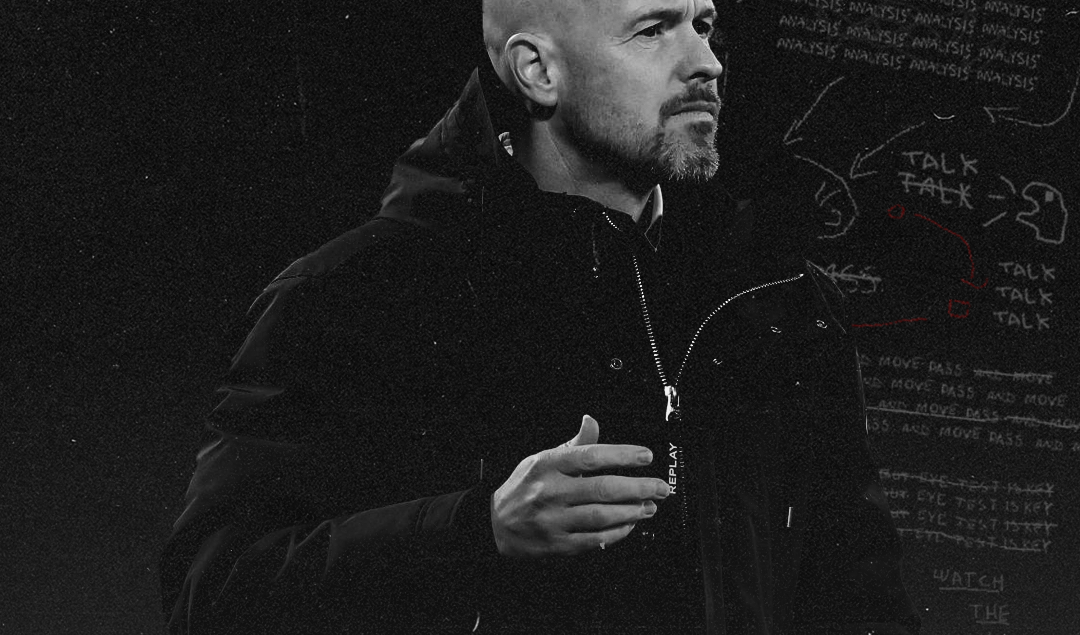How Manchester United Ended a Six-Year Trophy Drought and Defeated Newcastle in the Carabao Cup Final
Football tactics are like hairstyles – some are timeless classics, while others are cringe-worthy trends that quickly go out of style. In the Carabao Cup final between Manchester United and Newcastle, both teams showed that the key to success is not just having a good haircut, but also the ability to switch up your style on the fly. In a match that saw plenty of possession and penetration problems, tactical flexibility proved to be the ultimate hair product – keeping even the most unruly of strands under control.
Possession and the Penetration Problem: Newcastle’s Build-up
Newcastle had both full-backs spread out wide and Bruno Guimaraes operating as the pivot had the duty of progressing the ball. However, Manchester United had Marcus Rashford supporting Wout Weghorst in pressing the two centre-backs while he kept Kieran Trippier in his cover shadow, and Bruno Fernandes’s diligent work off the ball saw Bruno’s influence limited in the center of the pitch.
Sean Longstaff and Joelinton were picked up by Fred and Casemiro respectively. Newcastle’s wingers Miguel Almiron and Allan Saint-Maximin were picked up by Diogo Dalot, with the plan working well as Casemiro opened the scoring within 33 minutes whilst Rashford doubled their lead six minutes later. At this juncture, Newcastle needed to get an advantage from somewhere and this came in the form of Dan Burn shifting into central defence from left full-back to create a 3V2 against Rashford and Weghorst.
This ensured that the Magpies could utilise Fabian Schar as the spare man in the build-up to locate Trippier, who could combine with Longstaff or push forward to provide width in place of Almiron who had tucked inside to create a numerical superiority in the middle. The domino effect of Almiron’s movement was the need for Casemiro to pay attention to both Almiron and Joelinton which the Brazilian couldn’t do effectively.
At times, he would pay attention to Almiron and Joelinton would be free to receive from Burn. In periods he chose Joelinton over Almiron, and on one occasion, Trippier’s run on the wing would draw his shadow to him, leaving Almiron free to receive a pass. To solve this Almiron problem, Shaw dropped deep to mark Almiron and this action in itself created acres of space that Trippier could attack, with Saint-Maximin utilizing his dribbling to try to get the better of Dalot on Newcastle’s left.
Ten Hag solved this problem by moving Antony inside so that it would be quite difficult for Burn to find Joelinton and utilized the space that Trippier vacated by having Rashford occupy that space and exploit it when United were on the counter, and the combinations that would come from exploiting that space was key in the second goal.
When United attacked, Casemiro stayed back as the sole pivot, while Fred advanced alongside Bruno Fernandes, Rashford, Antony were all behind Weghorst-the striker. On the right, Antony tied Burn to the byline which freed up space for Dalot to run into from right full-back into an advanced position. Dalot was a free man who play one -two with Antony and take a shot or feed a teammate, and he could also be involved in combination plays with the others in attack.
Second Half: Casemiro Reigns Supreme as United Control The Game Without the Ball
Dalot, though a great asset to United in attack, was a somewhat easy target for Saint-Maximin to navigate his talent around. As such, Ten Hag replaced him with Aaron Wan-Bissaka at the break, whilst Eddie Howe brought on Alexander Isak for Longstaff to provide more attacking firepower alongside Callum Wilson up top. to put Saint-Maximin in check.
Ten Hag withdrew Fred and Weghorst in the 70th minute for Marcel Sabitzer and Scott McTominay, with Rashford occupying the center forward role, Fernandes shifting to the left wing and McTominay and Sabitzer partnering Casemiro, who occupied the pivot role, as United snuffed the life out of Newcastle’s midfield.
Sabitzer and McTominay acted as double 8s and pressed Guimaraes and Joelinton to ensure that their double pivots could not progress the ball. Newcastle brought on Swedish forward Isak for midfielder Longstaff at halftime to enable him to play behind Wilson and act as both a 10 and a supporting striker who could make runs into the box, but nothing changed — they failed to progress the ball and create dangerous scoring opportunities.
Whenever Newcastle chose to go through Saint-Maximin on the left, Casemiro moved to cover the left half space to provide support to Aaron Wan-Bissaka.When the ball got switched to the right and Newcastle tried to create overloads with Almiron and Isak, Casemiro shifted across to cover the right half-space and create a numerical advantage in defense.
To further compound Newcastle’s problem, Fernandes tucked inside when United were out of possession, making Almiron unable to utilize the halfspace on the occasions that he got into it because he couldn’t easily be found with a pass, rendering Wilson and Isak ineffective.
Howe withdrew Saint-Maximin and Guimaraes for Joe Willock and Jacob Murphy in the 79th minute whilst Jadon Sancho and Harry Maguire came on for Antony and Rashford and Elliot Anderson and Matt Ritchie came on for Wilson and Almiron in extra time. By the time the final whistle blewManchester United
In conclusion, Newcastle versus Manchester United match showcased the importance of tactical flexibility and adaptability in modern football. Both coaches, Eddie Howe and Erik ten Hag, made crucial changes to their respective teams’ structure and personnel during the match, highlighting the need to have a squad with versatile players capable of playing in different positions. As the sport continues to evolve, the ability to be flexible and adapt to new situations will be essential for teams seeking success at the highest level.
By: Tobi Peter / @keepIT_tactical
Featured Image: @GabFoligno / Soccrates Images – Getty Images
